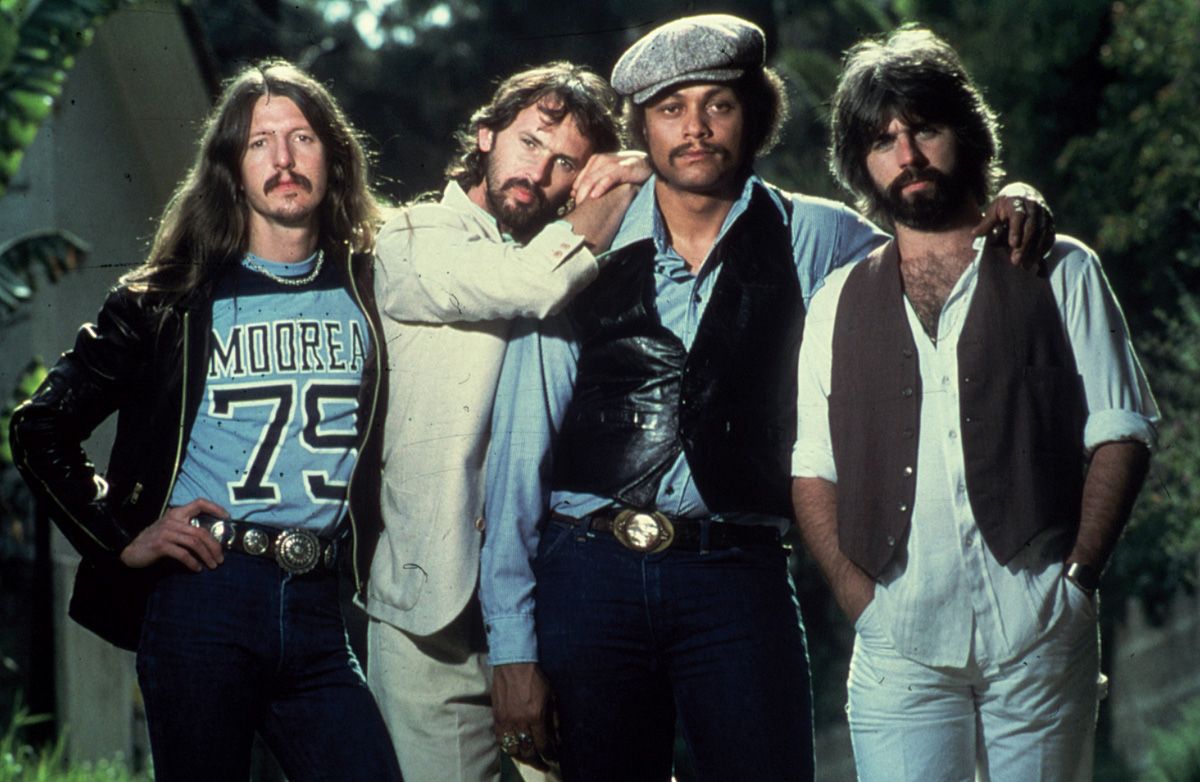
A Call for Harmony in a World Out of Tune
When The Doobie Brothers released “Listen to the Music” in 1972, it became an anthem not just of its era, but of an enduring human hope—that sound, and especially song, could transcend division and awaken collective joy. Featured as the opening track on their second album, Toulouse Street, this jubilant plea for unity climbed to No. 11 on the Billboard Hot 100, marking the band’s first major chart breakthrough and heralding the arrival of a fresh, harmony-rich force in American rock. With its irresistible rhythm and sunlit optimism, “Listen to the Music” became a signature tune that would forever define the band’s early identity and message.
The origins of “Listen to the Music” lie not in fantasy but in idealism—a belief that music could heal political and social fractures. Written by Tom Johnston, who also delivers its soulful lead vocal, the song was born from a utopian vision: what if world leaders could sit together and simply listen to music? Would their hardened ideologies melt into empathy? Would their self-interest give way to shared humanity? Johnston has described this notion as “kind of a utopian thing,” acknowledging its romanticism while holding fast to its emotional truth. In this light, the song becomes more than a groove-laden hit—it is a melodic act of diplomacy.
From its opening acoustic guitar strum, syncopated with an infectious percussive bounce and driven by cascading banjo and bass lines, “Listen to the Music” wastes no time in constructing a sonic space where joy feels inevitable. The lyrics gently usher listeners into this realm: “Don’t you feel it growin’, day by day / People gettin’ ready for the news / Some are happy, some are sad / Oh, we got to let the music play.” This invitation is both poetic and urgent—an appeal to abandon cynicism and surrender to the redemptive force of song.
Sonically, the track is a masterclass in warmth and motion. The interweaving guitars create a shimmering bed for Johnston’s vocal lines, which blend seamlessly with rich harmonies from fellow Doobies Patrick Simmons and Tiran Porter. The rhythmic propulsion is further anchored by John Hartman’s drums and Mike Hossack’s congas—a dual-drummer approach that became emblematic of the band’s unique rhythmic identity. This textural layering gives the song its distinct buoyancy—music that doesn’t just advocate joy but enacts it.
Yet beneath its surface brightness lies an earnestness that elevates it beyond mere feel-good fare. Released during a period of profound national unrest—the Vietnam War still raging, Watergate scandals beginning to unfurl—the song’s message was aspirational, almost defiant. In a time when protest often took the form of confrontation or critique, “Listen to the Music” dared to offer peace through rhythm, harmony as resistance.
Decades on, its power endures not only because of its infectious arrangement but because its message remains tragically evergreen. In every era marred by division or discord, we find ourselves returning to that same simple dream—that if we all just stopped to listen together, perhaps we might finally understand one another.
In “Listen to the Music,” The Doobie Brothers didn’t merely craft a radio hit; they created a hymn for common ground. And in doing so, they reminded us that sometimes the most revolutionary act is also the most joyful: pressing play.